 Package Modelica.Mechanics.Rotational.Sources
Package Modelica.Mechanics.Rotational.SourcesSources to drive 1D rotational mechanical components
 Package Modelica.Mechanics.Rotational.Sources
Package Modelica.Mechanics.Rotational.Sources
This package contains ideal sources to drive 1D mechanical rotational drive trains.
Extends from Modelica.Icons.SourcesPackage (Icon for packages containing sources).
| Name | Description |
|---|---|
Accelerate | Forced movement of a flange according to an acceleration signal |
ConstantSpeed | Constant speed, not dependent on torque |
ConstantTorque | Constant torque, not dependent on speed |
EddyCurrentTorque | Simple model of a rotational eddy current brake |
LinearSpeedDependentTorque | Linear dependency of torque versus speed |
Move | Forced movement of a flange according to an angle, speed and angular acceleration signal |
Position | Forced movement of a flange according to a reference angle signal |
QuadraticSpeedDependentTorque | Quadratic dependency of torque versus speed |
SignTorque | Constant torque changing sign with speed |
Speed | Forced movement of a flange according to a reference angular velocity signal |
Torque | Input signal acting as external torque on a flange |
Torque2 | Input signal acting as torque on two flanges |
TorqueStep | Constant torque, not dependent on speed |
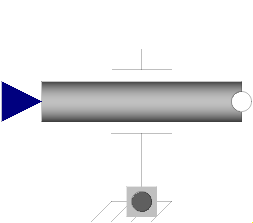 Model Modelica.Mechanics.Rotational.Sources.Position
Model Modelica.Mechanics.Rotational.Sources.Position
The input signal phi_ref defines the reference angle in [rad]. Flange flange is forced to move according to this reference motion relative to flange support. According to parameter exact (default = false), this is done in the following way:
The input signal can be provided from one of the signal generator blocks of the block library Modelica.Blocks.Sources.
Extends from Modelica.Mechanics.Rotational.Interfaces.PartialElementaryOneFlangeAndSupport2 (Partial model for a component with one rotational 1-dim. shaft flange and a support used for textual modeling, i.e., for elementary models).
| Type | Name | Default | Description |
|---|---|---|---|
Boolean | useSupport | false | = true, if support flange enabled, otherwise implicitly grounded |
Boolean | exact | false | Is true/false for exact treatment/filtering of the input signal, respectively |
Frequency | f_crit | 50 | If exact=false, critical frequency of filter to filter input signal |
| Type | Name | Description |
|---|---|---|
Flange_b | flange | Flange of shaft |
Support | support | Support/housing of component |
input RealInput | phi_ref | Reference angle of flange with respect to support as input signal |
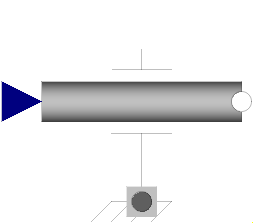 Model Modelica.Mechanics.Rotational.Sources.Speed
Model Modelica.Mechanics.Rotational.Sources.Speed
The input signal w_ref defines the reference speed in [rad/s]. Flange flange is forced to move relative to flange support according to this reference motion. According to parameter exact (default = false), this is done in the following way:
The input signal can be provided from one of the signal generator blocks of the block library Modelica.Blocks.Sources.
Extends from Modelica.Mechanics.Rotational.Interfaces.PartialElementaryOneFlangeAndSupport2 (Partial model for a component with one rotational 1-dim. shaft flange and a support used for textual modeling, i.e., for elementary models).
| Type | Name | Default | Description |
|---|---|---|---|
Boolean | useSupport | false | = true, if support flange enabled, otherwise implicitly grounded |
Boolean | exact | false | Is true/false for exact treatment/filtering of the input signal, respectively |
Frequency | f_crit | 50 | If exact=false, critical frequency of filter to filter input signal |
| Type | Name | Description |
|---|---|---|
Flange_b | flange | Flange of shaft |
Support | support | Support/housing of component |
input RealInput | w_ref | Reference angular velocity of flange with respect to support as input signal |
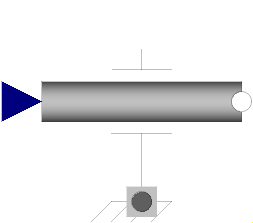 Model Modelica.Mechanics.Rotational.Sources.Accelerate
Model Modelica.Mechanics.Rotational.Sources.Accelerate
The input signal a defines an angular acceleration in [rad/s2]. Flange flange is forced to move relative to flange support with this acceleration. The angular velocity w and the rotation angle phi of the flange are automatically determined by integration of the acceleration.
The input signal can be provided from one of the signal generator blocks of the block library Modelica.Blocks.Sources.
Extends from Modelica.Mechanics.Rotational.Interfaces.PartialElementaryOneFlangeAndSupport2 (Partial model for a component with one rotational 1-dim. shaft flange and a support used for textual modeling, i.e., for elementary models).
| Type | Name | Default | Description |
|---|---|---|---|
Boolean | useSupport | false | = true, if support flange enabled, otherwise implicitly grounded |
| Type | Name | Description |
|---|---|---|
Flange_b | flange | Flange of shaft |
Support | support | Support/housing of component |
input RealInput | a_ref | Absolute angular acceleration of flange with respect to support as input signal |
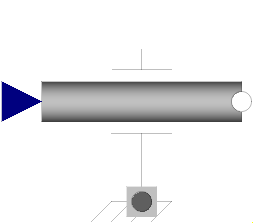 Model Modelica.Mechanics.Rotational.Sources.Move
Model Modelica.Mechanics.Rotational.Sources.Move
Flange flange is forced to move relative to flange support with a predefined motion according to the input signals:
u[1]: angle of flange
u[2]: angular velocity of flange
u[3]: angular acceleration of flange
The user has to guarantee that the input signals are consistent to each other, i.e., that u[2] is the derivative of u[1] and that u[3] is the derivative of u[2]. There are, however, also applications where by purpose these conditions do not hold. For example, if only the position dependent terms of a mechanical system shall be calculated, one may provide angle = angle(t) and set the angular velocity and the angular acceleration to zero.
The input signals can be provided from one of the signal generator blocks of the block library Modelica.Blocks.Sources.
Extends from Modelica.Mechanics.Rotational.Interfaces.PartialElementaryOneFlangeAndSupport2 (Partial model for a component with one rotational 1-dim. shaft flange and a support used for textual modeling, i.e., for elementary models).
| Type | Name | Default | Description |
|---|---|---|---|
Boolean | useSupport | false | = true, if support flange enabled, otherwise implicitly grounded |
| Type | Name | Description |
|---|---|---|
Flange_b | flange | Flange of shaft |
Support | support | Support/housing of component |
input RealInput | u[3] | Angle, angular velocity and angular acceleration of flange with respect to support as input signals |
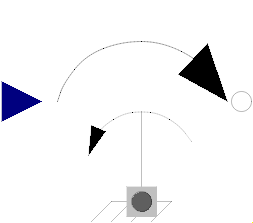 Model Modelica.Mechanics.Rotational.Sources.Torque
Model Modelica.Mechanics.Rotational.Sources.Torque
The input signal tau defines an external torque in [Nm] which acts (with negative sign) at a flange connector, i.e., the component connected to this flange is driven by torque tau.
The input signal can be provided from one of the signal generator blocks of Modelica.Blocks.Sources.
Extends from Modelica.Mechanics.Rotational.Interfaces.PartialElementaryOneFlangeAndSupport2 (Partial model for a component with one rotational 1-dim. shaft flange and a support used for textual modeling, i.e., for elementary models).
| Type | Name | Default | Description |
|---|---|---|---|
Boolean | useSupport | false | = true, if support flange enabled, otherwise implicitly grounded |
| Type | Name | Description |
|---|---|---|
Flange_b | flange | Flange of shaft |
Support | support | Support/housing of component |
input RealInput | tau | Accelerating torque acting at flange (= -flange.tau) |
 Model Modelica.Mechanics.Rotational.Sources.Torque2
Model Modelica.Mechanics.Rotational.Sources.Torque2
The input signal tau defines an external torque in [Nm] which acts at both flange connectors, i.e., the components connected to these flanges are driven by torque tau.
The input signal can be provided from one of the signal generator blocks of Modelica.Blocks.Sources.
Extends from Modelica.Mechanics.Rotational.Interfaces.PartialTwoFlanges (Partial model for a component with two rotational 1-dim. shaft flanges).
| Type | Name | Description |
|---|---|---|
Flange_a | flange_a | Flange of left shaft |
Flange_b | flange_b | Flange of right shaft |
input RealInput | tau | Torque driving the two flanges (a positive value accelerates the flange) |
 Model Modelica.Mechanics.Rotational.Sources.LinearSpeedDependentTorque
Model Modelica.Mechanics.Rotational.Sources.LinearSpeedDependentTorque
Model of torque, linearly dependent on angular velocity of flange.
Parameter TorqueDirection chooses whether direction of torque is the same in both directions of rotation or not.
Extends from Modelica.Mechanics.Rotational.Interfaces.PartialTorque (Partial model of a torque acting at the flange (accelerates the flange)).
| Type | Name | Default | Description |
|---|---|---|---|
Boolean | useSupport | false | = true, if support flange enabled, otherwise implicitly grounded |
Torque | tau_nominal | Nominal torque (if negative, torque is acting as load in positive direction of rotation) | |
Boolean | TorqueDirection | true | Same direction of torque in both directions of rotation |
AngularVelocity | w_nominal | Nominal speed |
| Type | Name | Description |
|---|---|---|
Flange_b | flange | Flange of shaft |
Support | support | Support/housing of component |
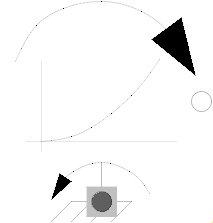 Model Modelica.Mechanics.Rotational.Sources.QuadraticSpeedDependentTorque
Model Modelica.Mechanics.Rotational.Sources.QuadraticSpeedDependentTorque
Model of torque, quadratic dependent on angular velocity of flange.
Parameter TorqueDirection chooses whether direction of torque is the same in both directions of rotation or not.
Extends from Modelica.Mechanics.Rotational.Interfaces.PartialTorque (Partial model of a torque acting at the flange (accelerates the flange)).
| Type | Name | Default | Description |
|---|---|---|---|
Boolean | useSupport | false | = true, if support flange enabled, otherwise implicitly grounded |
Torque | tau_nominal | Nominal torque (if negative, torque is acting as load in positive direction of rotation) | |
Boolean | TorqueDirection | true | Same direction of torque in both directions of rotation |
AngularVelocity | w_nominal | Nominal speed |
| Type | Name | Description |
|---|---|---|
Flange_b | flange | Flange of shaft |
Support | support | Support/housing of component |
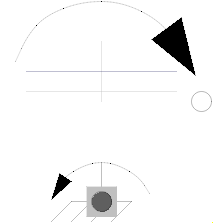 Model Modelica.Mechanics.Rotational.Sources.ConstantTorque
Model Modelica.Mechanics.Rotational.Sources.ConstantTorque
Model of constant torque, not dependent on angular velocity of flange.
Please note:
Positive torque accelerates in positive direction of rotation, but brakes in reverse direction of rotation.
Negative torque brakes in positive direction of rotation, but accelerates in reverse direction of rotation.
Extends from Modelica.Mechanics.Rotational.Interfaces.PartialTorque (Partial model of a torque acting at the flange (accelerates the flange)).
| Type | Name | Default | Description |
|---|---|---|---|
Boolean | useSupport | false | = true, if support flange enabled, otherwise implicitly grounded |
Torque | tau_constant | Constant torque (if negative, torque is acting as load in positive direction of rotation) |
| Type | Name | Description |
|---|---|---|
Flange_b | flange | Flange of shaft |
Support | support | Support/housing of component |
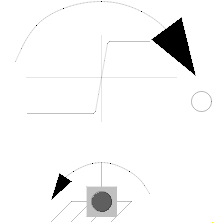 Model Modelica.Mechanics.Rotational.Sources.SignTorque
Model Modelica.Mechanics.Rotational.Sources.SignTorque
Model of constant torque which changes sign with direction of rotation.
Please note:
Positive torque accelerates in both directions of rotation.
Negative torque brakes in both directions of rotation.
Around zero speed regularization avoids numerical problems.
Extends from Modelica.Mechanics.Rotational.Interfaces.PartialTorque (Partial model of a torque acting at the flange (accelerates the flange)).
| Type | Name | Default | Description |
|---|---|---|---|
Boolean | useSupport | false | = true, if support flange enabled, otherwise implicitly grounded |
Torque | tau_constant | Constant torque (if negative, torque is acting as load) | |
Regularization | reg | Modelica.Blocks.Types.Regularization.Exp | Type of regularization |
AngularVelocity | w0 | Regularization below w0 |
| Type | Name | Description |
|---|---|---|
Flange_b | flange | Flange of shaft |
Support | support | Support/housing of component |
 Model Modelica.Mechanics.Rotational.Sources.ConstantSpeed
Model Modelica.Mechanics.Rotational.Sources.ConstantSpeed
Model of fixed angular velocity of flange, not dependent on torque.
Extends from Modelica.Mechanics.Rotational.Interfaces.PartialTorque (Partial model of a torque acting at the flange (accelerates the flange)).
| Type | Name | Default | Description |
|---|---|---|---|
Boolean | useSupport | false | = true, if support flange enabled, otherwise implicitly grounded |
AngularVelocity | w_fixed | Fixed speed |
| Type | Name | Description |
|---|---|---|
Flange_b | flange | Flange of shaft |
Support | support | Support/housing of component |
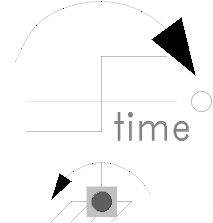 Model Modelica.Mechanics.Rotational.Sources.TorqueStep
Model Modelica.Mechanics.Rotational.Sources.TorqueStep
Model of a torque step at time startTime.
Positive torque accelerates in positive direction of flange rotation.
Extends from Modelica.Mechanics.Rotational.Interfaces.PartialTorque (Partial model of a torque acting at the flange (accelerates the flange)).
| Type | Name | Default | Description |
|---|---|---|---|
Boolean | useSupport | false | = true, if support flange enabled, otherwise implicitly grounded |
Torque | stepTorque | Height of torque step (if negative, torque is acting as load) | |
Torque | offsetTorque | Offset of torque | |
Time | startTime | 0 | Torque = offset for time < startTime |
| Type | Name | Description |
|---|---|---|
Flange_b | flange | Flange of shaft |
Support | support | Support/housing of component |
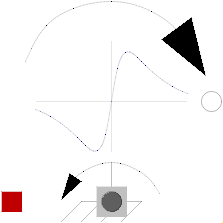 Model Modelica.Mechanics.Rotational.Sources.EddyCurrentTorque
Model Modelica.Mechanics.Rotational.Sources.EddyCurrentTorque
This is a simple model of a rotational eddy current brake. The torque versus speed characteristic is defined by Kloss' equation.
Thermal behaviour:
The resistance of the braking disc is influenced by the actual temperature Theatport, which in turn shifts the speed w_nominal at which the (unchanged) maximum torque occurs.
If the heatPort is not used (useHeatPort = false), the operational temperature remains at the given temperature T.
However, the speed w_nominal at which the maximum torque occurs is adapted from reference temperature TRef to the operational temperature.
Extends from Modelica.Mechanics.Rotational.Interfaces.PartialTorque (Partial model of a torque acting at the flange (accelerates the flange)) and Modelica.Thermal.HeatTransfer.Interfaces.PartialElementaryConditionalHeatPort (Partial model to include a conditional HeatPort in order to dissipate losses, used for textual modeling, i.e., for elementary models).
| Type | Name | Default | Description |
|---|---|---|---|
Torque | tau_nominal | Maximum torque (always braking) | |
AngularVelocity | w_nominal | Nominal speed (leads to maximum torque) at reference temperature | |
Temperature | TRef | Reference temperature | |
LinearTemperatureCoefficient20 | alpha20 | Temperature coefficient of material | |
Boolean | useSupport | false | = true, if support flange enabled, otherwise implicitly grounded |
Boolean | useHeatPort | false | =true, if heatPort is enabled |
Temperature | T | 293.15 | Fixed device temperature if useHeatPort = false |
| Type | Name | Description |
|---|---|---|
Flange_b | flange | Flange of shaft |
Support | support | Support/housing of component |
HeatPort_a | heatPort | Optional port to which dissipated losses are transported in form of heat |